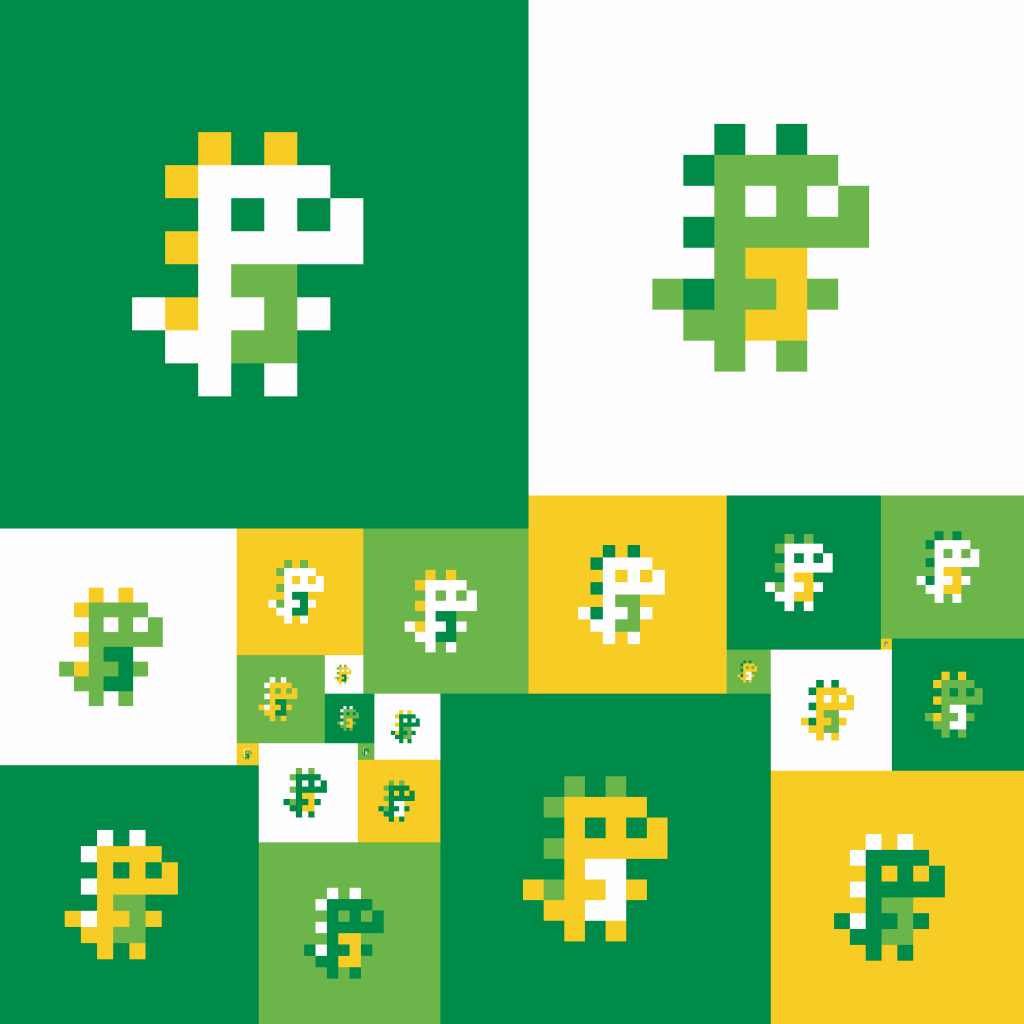
This work utilizes algorithms to generate artistic creations. The theme features a pixelated tiny dinos using only four colors. Through factorial permutations, 24 square images of varying sizes are constructed and ultimately assembled into a Polka art piece that adheres to the principles of “simple perfect squares” and the “four-color theorem.”
该作品使用算法生成艺术创作,主题像素小恐龙仅用了 4 种颜色,通过阶乘全排列构造出 24 张正方形但大小不同的图片,最终拼接成符合「简单完美正方形」和「四色定理」的波卡艺术作品。
“The Simple Perfect Square” is a design philosophy that emphasizes presenting a pure and harmonious aesthetic through simplicity, symmetry, and precise shapes. This concept is rooted in the early 20th-century Modernist movement, aiming to discard excessive ornamentation and complexity in favor of simplicity and functionality. It found expression in art and design movements such as the German Bauhaus school and the Dutch De Stijl movement, becoming a classic element in modern design.
「简单完美正方形」是一种设计理念,强调通过简洁、对称和精准的形状呈现出一种纯粹而和谐的美感。这一概念根植于20世纪初的现代主义运动,旨在摒弃过度装饰和复杂性,追求简约和功能性。在德国包豪斯学派和荷兰派等艺术和设计运动中得到了体现,成为现代设计中的经典元素之一。
“The Four Color Theorem” is a fundamental theorem in graph theory, stating that any planar graph can be colored using four colors in such a way that no two adjacent regions have the same color. The problem was first proposed by the British mathematician Francis Guthrie in 1852 and was later proven in 1976 by Kenneth Appel and Wolfgang Haken through computer verification. The proof of the Four Color Theorem underwent a long process of mathematical development, involving complex graph theory and computer algorithms. Prior to 1976, no one could find a concise and comprehensive proof. The verification by Appel and Haken involved a computer program checking thousands of cases, providing a convincing solution to this classical problem.
「四色定理」是图论中的一项基本定理,它指出任何平面图都可以使用四种颜色进行着色,使得任意两个相邻的区域颜色不同。这个问题最早由英国数学家弗朗西斯·格斯在1852年提出,并在1976年由肖恩·阿皮尔和温斯顿·戴斯蒙德通过计算机验证而得证。四色定理的证明经历了长期的数学发展过程,涉及复杂的图论和计算机算法。在1976年之前,没有人能够找到一种简洁而全面的证明。阿皮尔和戴斯蒙德的验证通过计算机程序检查了数千种情况,为这一经典问题提供了令人信服的解答。
